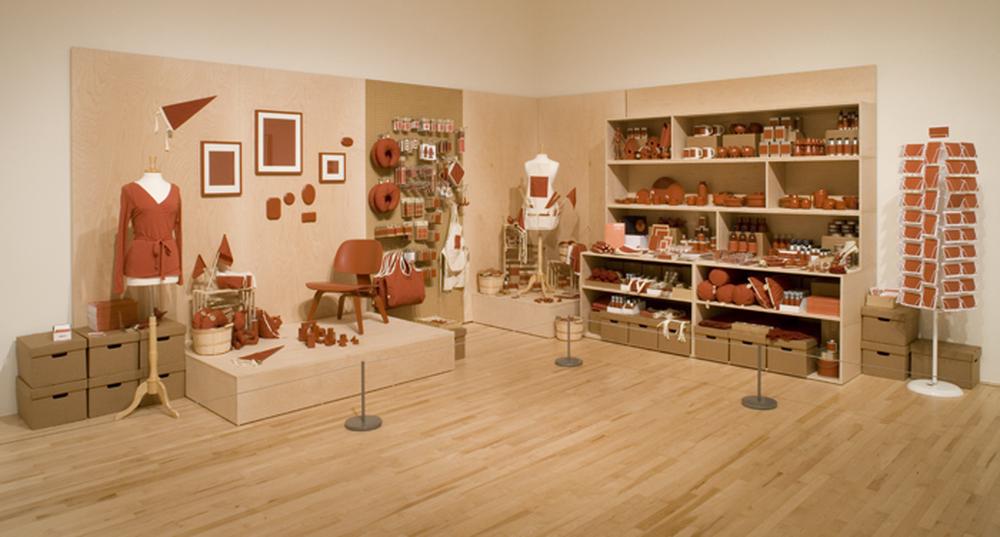Stephanie Syjuco. Shadowshop and the Economy of Art

In 2010 the San Francisco Museum of Modern Art commissioned Stephanie Syjuco to create a new artwork, offering a budget of $35,000. With the money, she organized her first “shadowshop”—a temporary store embedded in the museum’s fifth-floor galleries that sold objects made by over two hundred artists, democratizing the artist’s invitation to show work at the museum. The shadowshop’s sales revenue—some $105,000, triple the museum’s original investment—went directly back to the artists.1 Further, the installation destabilized museum curatorial structures that typically determine whose artwork gets seen in a museum exhibition, raising questions about the status of the objects for sale as “art” or “products.”2 Syjuco drew attention to the relationship between commerce and the museum, noting that while the museum is not typically a store for art, it is a space for the display of purchased objects. As the artist explained, “it’s highlighting an existing kind of predicament, which is that art and art objects are tied into an economy and we can choose to separate ourselves from it, but that doesn’t do anything . . . so what happens when it’s just laid out for you to deal with.”3
Stephanie Syjuco, “Art / Politics / Aesthetics,” lecture at the Berkeley Art Museum and Pacific Film Archive, California, April 5, 2017 (posted May 10, 2017), video, 1:08 hours, available at youtu.be/JqGxkJoZMGY. ↩︎
Tim Roseborough, “A Site of Curatorial Destabilization: Stephanie Syjuco’s Shadowshop,” op-ed in Art Practical, May 5, 2011, available at artpractical.com/column/a_site_of_curatorial_destabilization_stephanie_syjucos_shadowshop/su/. ↩︎
Stephanie Syjuco, in “Stephanie Syjuco on the Economy of Art,” San Francisco Museum of Modern Art, posted December 13, 2010, 1:51 minutes, available at youtu.be/Jq7zGTrnQvU. ↩︎